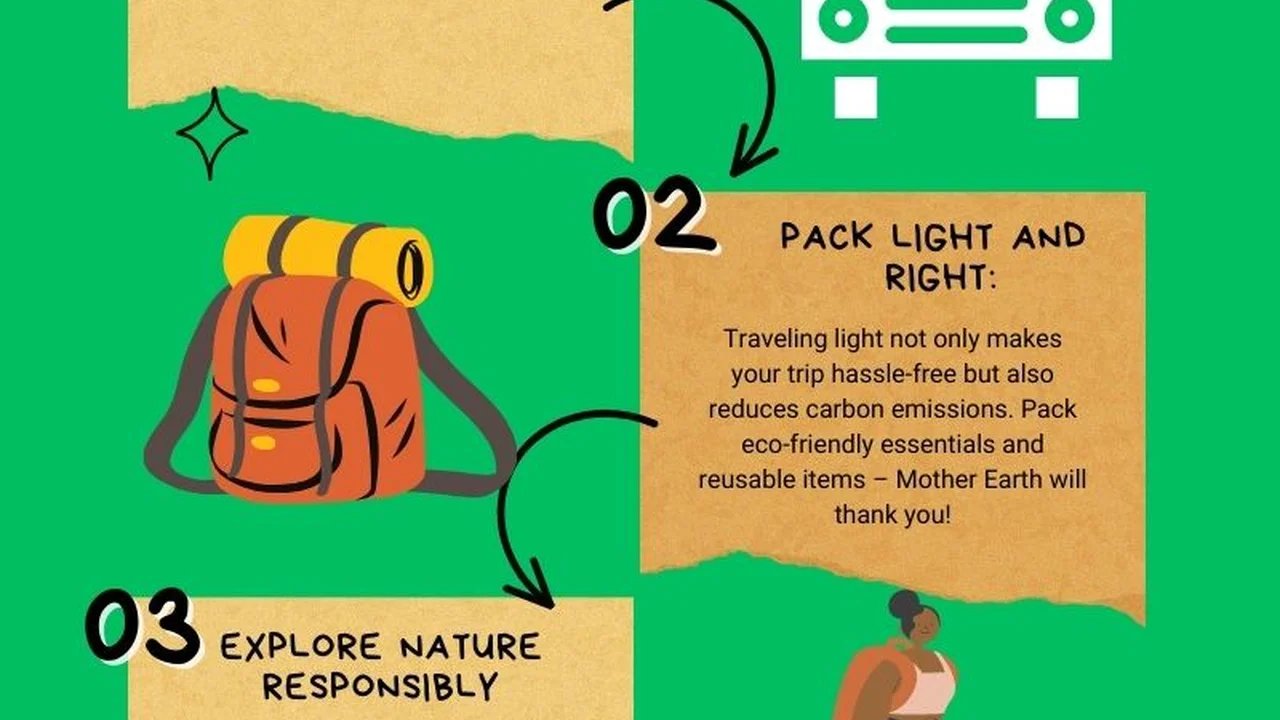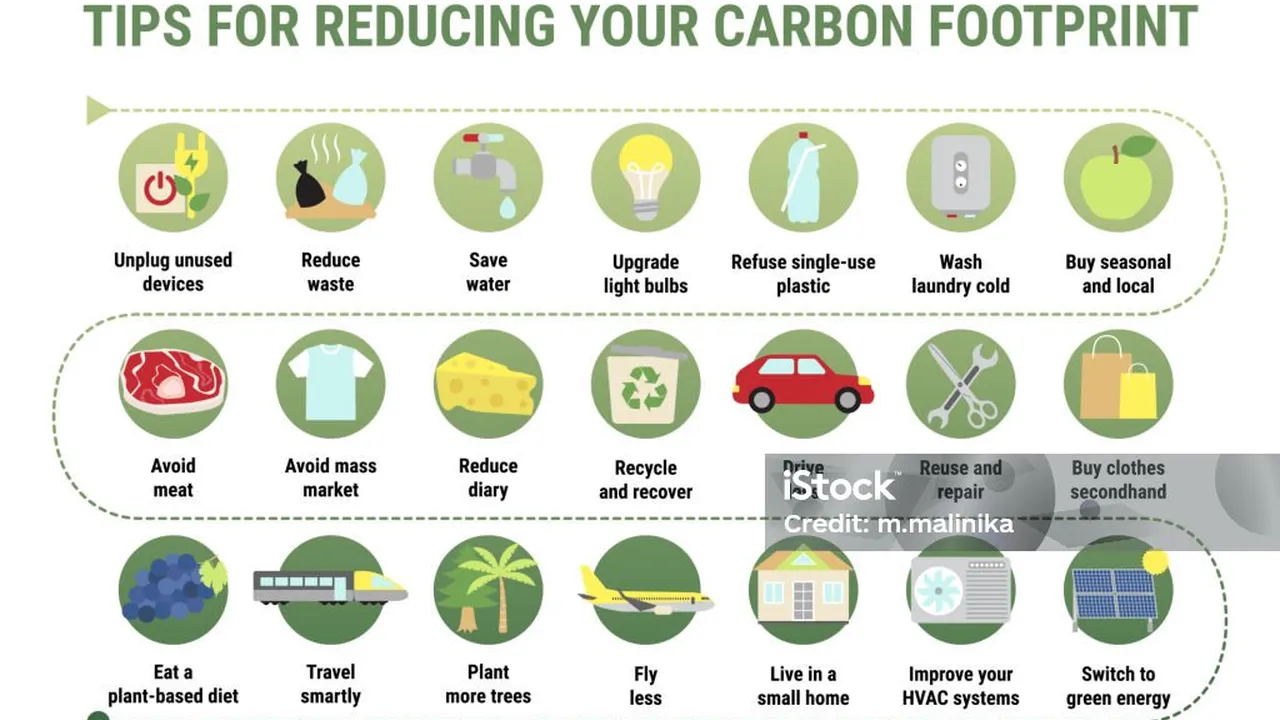5 Eco-Friendly Tips for Planning a Green Road Trip
Learn 5 eco-friendly tips for planning a sustainable road trip. Explore the open road with a conscious mindset.

5 Eco-Friendly Tips for Planning a Green Road Trip
Road trips are an iconic way to explore new places, offering freedom, flexibility, and the joy of discovery. But as much as we love hitting the open road, it's crucial to consider the environmental impact of our adventures. From fuel consumption to waste generation, traditional road trips can leave a significant carbon footprint. The good news? Planning a green road trip is not only possible but also incredibly rewarding. It allows you to enjoy the journey while minimizing your impact on the planet. This comprehensive guide will walk you through five essential eco-friendly tips, offering practical advice, product recommendations, and real-world scenarios to help you plan your most sustainable road trip yet.
Choosing Your Ride Sustainable Vehicle Selection for Road Trips
The vehicle you choose is arguably the most significant factor in determining your road trip's environmental impact. Opting for a fuel-efficient or alternative-fuel vehicle can drastically reduce your carbon emissions. Let's dive into the best options and what to consider.
Electric Vehicles EVs The Ultimate Green Choice
Electric vehicles are the gold standard for eco-friendly travel. They produce zero tailpipe emissions, making them incredibly clean. While range anxiety used to be a concern, the charging infrastructure is rapidly expanding, especially in the US and parts of Southeast Asia. Many modern EVs offer ranges well over 200 miles, with some exceeding 300 or even 400 miles on a single charge, making long-distance travel feasible.
Product Spotlight Tesla Model 3 Long Range
- Description: The Tesla Model 3 Long Range offers an impressive EPA estimated range of 333 miles (536 km). It's known for its extensive Supercharger network, making long-distance travel relatively seamless.
- Use Case: Perfect for cross-country trips where charging stations are available along major highways. Its spacious interior and advanced autopilot features enhance comfort for long drives.
- Comparison: Compared to other EVs like the Nissan Leaf (shorter range) or the Porsche Taycan (higher price point), the Model 3 strikes an excellent balance of range, performance, and charging infrastructure access.
- Estimated Price: Around $47,490 USD (before incentives).
Product Spotlight Hyundai Ioniq 5
- Description: The Hyundai Ioniq 5 boasts a distinctive retro-futuristic design and a competitive range of up to 303 miles (488 km) for the RWD Long Range model. It supports ultra-fast charging, allowing an 80% charge in about 18 minutes at a 350 kW charger.
- Use Case: Ideal for road trippers who prioritize fast charging capabilities and a comfortable, tech-filled cabin. Great for exploring scenic routes where charging stops might be less frequent but powerful.
- Comparison: Offers faster charging than many competitors and a more unique aesthetic than the Model 3, though its charging network isn't as extensive as Tesla's Supercharger network.
- Estimated Price: Around $41,800 USD (before incentives).
Hybrid Vehicles A Great Compromise
If a full EV isn't feasible due to budget or charging infrastructure concerns, a hybrid vehicle is an excellent alternative. They combine a gasoline engine with an electric motor, significantly improving fuel efficiency compared to traditional gasoline cars.
Product Spotlight Toyota RAV4 Hybrid
- Description: The Toyota RAV4 Hybrid is a popular choice for its reliability, spaciousness, and impressive fuel economy of 40 MPG combined (5.9 L/100km). It offers the versatility of an SUV with reduced emissions.
- Use Case: Perfect for families or those needing extra cargo space for camping gear or luggage. Its AWD option makes it suitable for diverse terrains.
- Comparison: Outperforms many non-hybrid SUVs in fuel efficiency and offers a more traditional driving experience than a full EV, without the need for charging infrastructure planning.
- Estimated Price: Around $31,725 USD.
Fuel-Efficient Gasoline Cars When Other Options Aren't Available
If EVs or hybrids are out of reach, focus on highly fuel-efficient gasoline cars. Look for models with small, turbocharged engines or those known for their excellent MPG ratings.
Product Spotlight Honda Civic
- Description: The Honda Civic consistently ranks high for fuel efficiency, with models achieving over 30 MPG combined (7.8 L/100km). It's reliable, comfortable, and widely available.
- Use Case: A great choice for solo travelers or couples on a budget, offering a balance of efficiency and practicality for urban and highway driving.
- Comparison: While not as eco-friendly as hybrids or EVs, it's a significant improvement over larger, less efficient gasoline vehicles. It's also generally more affordable upfront.
- Estimated Price: Around $23,950 USD.
Packing Smart and Light Minimizing Weight and Waste
What you pack and how you pack it can significantly impact your road trip's sustainability. Lighter loads mean better fuel efficiency, and smart packing reduces waste.
Reduce Weight for Better Fuel Economy
Every extra pound in your car reduces fuel efficiency. Before you leave, remove any unnecessary items from your trunk and cabin. Pack only what you truly need.
Embrace Reusables Say No to Single-Use Plastics
This is a big one! Single-use plastics are a major environmental culprit. By bringing your own reusables, you can drastically cut down on waste.
Product Spotlight Hydro Flask Water Bottle
- Description: A durable, insulated stainless steel water bottle that keeps drinks cold for up to 24 hours and hot for 12. Available in various sizes and colors.
- Use Case: Essential for staying hydrated without buying plastic water bottles. Refill at rest stops, cafes, or water fountains.
- Comparison: More durable and better insulating than plastic bottles, and a more stylish alternative to basic reusable bottles.
- Estimated Price: $35 - $50 USD depending on size.
Product Spotlight Stasher Reusable Silicone Bags
- Description: Food-grade silicone bags that are endlessly reusable, freezer-safe, microwave-safe, and dishwasher-safe. Perfect for snacks, sandwiches, or even toiletries.
- Use Case: Replace single-use plastic sandwich bags and snack bags. Great for packing trail mix, fruit, or even storing leftovers from a restaurant.
- Comparison: A more durable and versatile alternative to traditional plastic Ziploc bags. They don't leach chemicals and last much longer.
- Estimated Price: $10 - $20 USD per bag, depending on size.
Product Spotlight Reusable Cutlery Set Bamboo or Stainless Steel
- Description: A portable set of fork, spoon, knife, and sometimes chopsticks, often with a cleaning brush, housed in a small carrying case.
- Use Case: Avoid using disposable plastic cutlery when eating on the go, at picnics, or from takeout.
- Comparison: Much more sustainable than plastic cutlery, and more convenient than trying to find reusable options at every stop.
- Estimated Price: $10 - $25 USD.
Pack Smart for Less Waste
Consider packing items that generate less waste. For example, bring whole fruits instead of pre-packaged snacks, or make your own coffee instead of buying disposable cups.
Route Planning and Eco-Friendly Navigation Optimizing Your Journey
How you plan your route can also contribute to a greener road trip. Efficient navigation and mindful stopovers are key.
Optimize Your Route for Efficiency
Use navigation apps that can help you find the most fuel-efficient routes. Avoid excessive idling, sudden acceleration, and hard braking, as these waste fuel.
Discover Eco-Friendly Accommodations
When planning overnight stays, look for hotels, guesthouses, or campsites that prioritize sustainability. Many establishments now boast eco-certifications or implement green practices.
Finding Green Stays
- Look for Certifications: Search for hotels with certifications like LEED (Leadership in Energy and Environmental Design), Green Seal, or EarthCheck.
- Check Hotel Websites: Many eco-conscious hotels proudly display their sustainability initiatives on their websites, such as linen reuse programs, renewable energy use, or water conservation efforts.
- Consider Camping: Camping is often the most eco-friendly accommodation option, especially if you practice Leave No Trace principles.
Support Local and Sustainable Businesses
When you stop for food or supplies, seek out local farmers' markets, independent restaurants, and shops that prioritize local sourcing and sustainable practices. This supports the local economy and reduces the carbon footprint associated with long-distance transportation of goods.
Waste Management on the Go Responsible Disposal and Recycling
Even with the best intentions, some waste is inevitable. The key is to manage it responsibly.
Pack a Trash Bag and Recycling Bag
Don't rely on finding trash cans or recycling bins everywhere. Bring your own bags to collect your waste and recyclables. This allows you to properly sort and dispose of them when you find appropriate facilities.
Product Spotlight Car Trash Can with Liner
- Description: A compact, leak-proof trash can designed for cars, often with a lid and internal liners.
- Use Case: Keeps your car tidy and prevents littering. Allows you to collect all your waste until you can dispose of it properly.
- Comparison: More convenient and less messy than using a regular plastic bag. Some models have compartments for recycling.
- Estimated Price: $15 - $30 USD.
Know Local Recycling Rules
Recycling rules vary significantly from place to place. Before you dispose of your recyclables, take a moment to understand the local guidelines. When in doubt, it's often better to hold onto items until you can confirm they can be recycled.
Compost Food Scraps When Possible
If you're camping or staying at an eco-lodge, inquire about composting facilities for food scraps. This diverts organic waste from landfills, where it produces harmful methane gas.
Engaging with Nature Responsibly Leave No Trace Principles
A big part of road tripping is enjoying natural landscapes. It's vital to do so responsibly, ensuring these beautiful places remain pristine for future generations.
Understand and Practice Leave No Trace
The Leave No Trace principles are a set of outdoor ethics that promote conservation in the outdoors. They are crucial for any eco-conscious traveler.
The Seven Principles of Leave No Trace
- Plan Ahead and Prepare: Know the regulations and special concerns for the areas you'll visit. Prepare for extreme weather, hazards, and emergencies.
- Travel and Camp on Durable Surfaces: Stick to existing trails and campsites. Protect riparian areas by camping at least 200 feet from water.
- Dispose of Waste Properly: Pack it in, pack it out. Inspect your campsite and rest areas for trash or spilled foods.
- Leave What You Find: Preserve the past: examine, but do not touch, cultural or historic structures and artifacts. Leave rocks, plants, and other natural objects as you find them.
- Minimize Campfire Impacts: Use established fire rings, keep fires small, and burn all wood and coals to ash.
- Respect Wildlife: Observe wildlife from a distance. Never feed animals. Protect wildlife and your food by storing rations and trash securely.
- Be Considerate of Other Visitors: Respect other visitors and protect the quality of their experience. Yield to other users on the trail.
Support Conservation Efforts
Consider donating to local conservation organizations in the areas you visit, or choose to visit national parks and protected areas where your entrance fees directly support their maintenance and conservation efforts.
Educate Yourself and Others
Learn about the local ecosystems and environmental challenges of the places you visit. Share your knowledge and enthusiasm for sustainable travel with your companions and inspire others to adopt greener habits.
Planning a green road trip is an ongoing journey of learning and conscious choices. By implementing these five tips, from selecting your vehicle to managing waste and respecting nature, you're not just taking a trip; you're making a statement. You're showing that adventure and environmental responsibility can go hand in hand, paving the way for more sustainable travel for everyone. So, pack your bags, charge your EV, and hit the road with a clear conscience and an open heart, ready to explore the world responsibly.
:max_bytes(150000):strip_icc()/277019-baked-pork-chops-with-cream-of-mushroom-soup-DDMFS-beauty-4x3-BG-7505-5762b731cf30447d9cbbbbbf387beafa.jpg)






